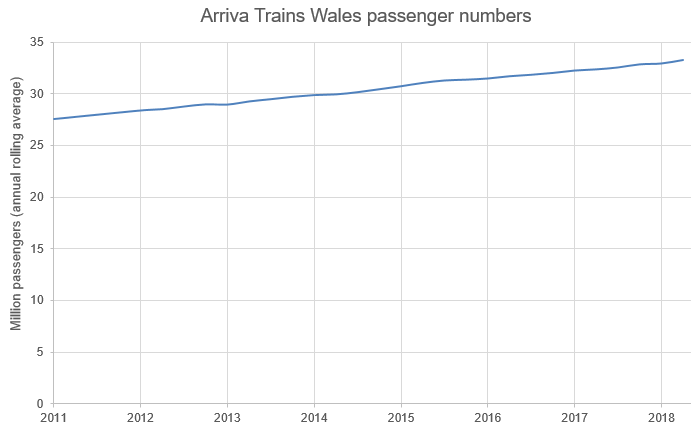|
Llandaf Railway Station
Llandaf railway station is in Llandaff North, Cardiff, Wales. It serves the areas of Llandaff North and Whitchurch. History The Taff Vale Railway opened the station in 1840, only ten years after the first stations for locomotive-drawn trains had been opened on the Liverpool and Manchester Railway. Originally named ''Llandaff'', the station had been renamed ''Llandaff for Whitchurch'' by 1910, and on 12 May 1980 it was again renamed ''Llandaf''. In 2015 work started on replacing the old footbridge with one that offers step-free access to all platforms. This was funded by Network Rail and the Department of Transport Access for all Scheme. A new ticket office opened in November 2017 to replace the old station building (on platform 2) which is open six days a week. Further improvements planned in connection with the proposed South Wales Metro network included new waiting shelters, improved bike storage, refurbishment of the existing car park, extra lighting and CCTV. Services T ... [...More Info...] [...Related Items...] OR: [Wikipedia] [Google] [Baidu] |
Llandaff North
Llandaff North ( cy, Ystum Taf), is a district, community and coterminous electoral ward in the north of Cardiff, the capital city of Wales. Description It is located in the north of Cardiff and can be considered a two-part ward, each containing about half the population; a northern section of mainly middle class housing, and a southern section commonly known as the Gabalfa housing estate which consists of public sector and former public sector housing stock. When the Community Charge (or Poll Tax) was introduced in 1990 the Gabalfa housing estate and also parts of the Mynachdy housing estate were placed into the new Llandaff North Electoral Ward, and the boundaries of the Gabalfa Electoral Ward were moved and redrawn to create a now separate ward to the south east of the new Llandaff North ward. This new Gabalfa ward still includes the Gabalfa Interchange and also some parts of Mynachdy, but no longer includes any of the Gabalfa housing estate. It is understood that these chang ... [...More Info...] [...Related Items...] OR: [Wikipedia] [Google] [Baidu] |
Arriva Trains Wales
Arriva Trains Wales (ATW; cy, Trenau Arriva Cymru) was a British train operating company owned by Arriva UK Trains that operated the Wales & Borders franchise. It ran urban and inter-urban passenger services to all railway stations in Wales, including , , , , and , as well as to certain stations in England such as , , , Crewe railway station, Crewe, and . In August 2003, Arriva UK Trains was awarded the newly created Wales & Borders franchise by the Strategic Rail Authority, Arrival Trains Wales began operation during December 2003, taking over from Wales and Borders. Following the implementation of the Railways Act 2005 and Transport (Wales) Act 2006, responsibility for the franchise was devolved to the Welsh Government, which worked closely with Arriva Trains Wales during its period of operations. Numerous service changes were made under the company's management; on 6 February 2008, the Ebbw Valley Railway was partially re-opened to passenger services for the first time in ... [...More Info...] [...Related Items...] OR: [Wikipedia] [Google] [Baidu] |
Railway Stations In Great Britain Opened In 1840
Rail transport (also known as train transport) is a means of transport that transfers passengers and goods on wheeled vehicles running on rails, which are incorporated in tracks. In contrast to road transport, where the vehicles run on a prepared flat surface, rail vehicles (rolling stock) are directionally guided by the tracks on which they run. Tracks usually consist of steel rails, installed on sleepers (ties) set in ballast, on which the rolling stock, usually fitted with metal wheels, moves. Other variations are also possible, such as "slab track", in which the rails are fastened to a concrete foundation resting on a prepared subsurface. Rolling stock in a rail transport system generally encounters lower frictional resistance than rubber-tyred road vehicles, so passenger and freight cars (carriages and wagons) can be coupled into longer trains. The operation is carried out by a railway company, providing transport between train stations or freight customer faciliti ... [...More Info...] [...Related Items...] OR: [Wikipedia] [Google] [Baidu] |
Former Taff Vale Railway Stations
A former is an object, such as a template, gauge or cutting die, which is used to form something such as a boat's hull. Typically, a former gives shape to a structure that may have complex curvature. A former may become an integral part of the finished structure, as in an aircraft fuselage, or it may be removable, being using in the construction process and then discarded or re-used. Aircraft formers Formers are used in the construction of aircraft fuselage, of which a typical fuselage has a series from the nose to the empennage, typically perpendicular to the longitudinal axis of the aircraft. The primary purpose of formers is to establish the shape of the fuselage and reduce the column length of stringers to prevent instability. Formers are typically attached to longerons, which support the skin of the aircraft. The "former-and-longeron" technique (also called stations and stringers) was adopted from boat construction, and was typical of light aircraft built until the ad ... [...More Info...] [...Related Items...] OR: [Wikipedia] [Google] [Baidu] |
DfT Category E Stations
The Department for Transport (DfT) is a department of His Majesty's Government responsible for the English transport network and a limited number of transport matters in Scotland, Wales and Northern Ireland that have not been devolved. The department is run by the Secretary of State for Transport, currently (since 25 October 2022) Mark Harper. The expenditure, administration and policy of the Department for Transport are scrutinised by the Transport Committee. History The Ministry of Transport was established by the Ministry of Transport Act 1919 which provided for the transfer to the new ministry of powers and duties of any government department in respect of railways, light railways, tramways, canals and inland waterways, roads, bridges and ferries, and vehicles and traffic thereon, harbours, docks and piers. In September 1919, all the powers of the Road Board, the Ministry of Health, and the Board of Trade in respect of transport, were transferred to the new ministry. ... [...More Info...] [...Related Items...] OR: [Wikipedia] [Google] [Baidu] |
Railway Stations In Cardiff
Rail transport (also known as train transport) is a means of transport that transfers passengers and goods on wheeled vehicles running on rails, which are incorporated in tracks. In contrast to road transport, where the vehicles run on a prepared flat surface, rail vehicles (rolling stock) are directionally guided by the tracks on which they run. Tracks usually consist of steel rails, installed on sleepers (ties) set in ballast, on which the rolling stock, usually fitted with metal wheels, moves. Other variations are also possible, such as "slab track", in which the rails are fastened to a concrete foundation resting on a prepared subsurface. Rolling stock in a rail transport system generally encounters lower frictional resistance than rubber-tyred road vehicles, so passenger and freight cars (carriages and wagons) can be coupled into longer trains. The operation is carried out by a railway company, providing transport between train stations or freight customer faciliti ... [...More Info...] [...Related Items...] OR: [Wikipedia] [Google] [Baidu] |
Rail Transport In Cardiff
Rail transport in Cardiff has developed to provide connections to many other major cities in the United Kingdom, and to provide an urban rail network for the city and its commuter towns in southeast Wales. Today, there are three train operating companies in Cardiff: Great Western Railway, CrossCountry and Transport for Wales. Services to/from Cardiff Transport for Wales ;National * – – – – – – – – * Cardiff Central – Newport – Hereford – – – * Cardiff Central – – – – – – – * Cardiff Central – Newport – – ;Regional * Cardiff Central – Bridgend – Port Talbot Parkway – – * Cardiff Central – – – ;Local These services operate on the Valley Lines network – an urban rail network centred on Cardiff that connects it to its commuter towns in South East Wales: * Cardiff Central – – – Coryton * Cardiff Central – – – * Cardiff Central – – * Cardiff Central – Grangetown – ... [...More Info...] [...Related Items...] OR: [Wikipedia] [Google] [Baidu] |
List Of Railway Stations In Cardiff
This is a list of railway stations in Cardiff, the capital of Wales. It only includes passenger heavy rail stations with timetabled services. Rail operators All 20 stations in Cardiff are owned by Network Rail and managed by Transport for Wales which also operates all train services at these stations, with the exception of Cardiff Central which is also served by CrossCountry and Great Western Railway. Stations The stations form part of Cardiff's commuter rail network, colloquially known as Valley Lines, with Cardiff Queen Street and Cardiff Central being the main hubs of the city. Cardiff Central is also one of the United Kingdom's major railway stations, providing connections to Newport, Bristol, Bath, London, Southampton, Portsmouth, Gloucester, Cheltenham, Birmingham and Nottingham. Cardiff Central continues to serve as major interchange on the British rail network, with 1,042,297 changes at the station in 08/09. Its passenger usage also increased by around 1.5 million to 11. ... [...More Info...] [...Related Items...] OR: [Wikipedia] [Google] [Baidu] |
Rush Hour
A rush hour (American English, British English) or peak hour (Australian English) is a part of the day during which traffic congestion on roads and crowding on public transport is at its highest. Normally, this happens twice every weekday: once in the morning and once in the afternoon or evening, the times during which the most people commute. The term is often used for a period of peak congestion that may last for more than one hour. The term is very broad, but often refers specifically to private automobile transportation traffic, even when there is a large volume of cars on a road but not many people, or if the volume is normal but there is some disruption of speed. By analogy to vehicular traffic, the term Internet rush hour has been used to describe periods of peak data network usage, resulting in delays and slower delivery of data packets. Definition The name is sometimes a misnomer, as the peak period often lasts more than one hour and the "rush" refers to the volume ... [...More Info...] [...Related Items...] OR: [Wikipedia] [Google] [Baidu] |
South Wales Metro
The South Wales Metro () is an integrated heavy rail, light rail and bus-based public transport services and systems network in South East Wales around the hub of . The first phase was approved for development in October 2013. Works are currently underway with a brand new depot under construction at Taff's Well and new trains being constructed at the Construcciones y Auxiliar de Ferrocarriles (CAF) factory in Newport. This will also include the electrification of the core Valley Lines and new stations. This will be the biggest overhaul to the railways of South Wales since their construction 170 years ago. Background The rail-based transport system in South Wales was degraded due to the 1960s Beeching cuts. This saw the closure of some lines and many sub-branches serving the mainly ex-mining communities and their easy links to ports and resorts on the coast. Since 1987, five of the main closures have been reversed: services were reinstated on Cardiff's City Line that year, th ... [...More Info...] [...Related Items...] OR: [Wikipedia] [Google] [Baidu] |





